NIL
Tax-free NIL payments to college athletes? One state hopes it will give its schools an edge.
By Weston Blasi A bill exempting name, image and likeness earnings from state income tax has been signed into law in Arkansas The fight in recruiting college athletes will now include taxes. Colleges across the nation are locked in a constant battle over high school and college transfers to improve their sports teams, particularly in […]
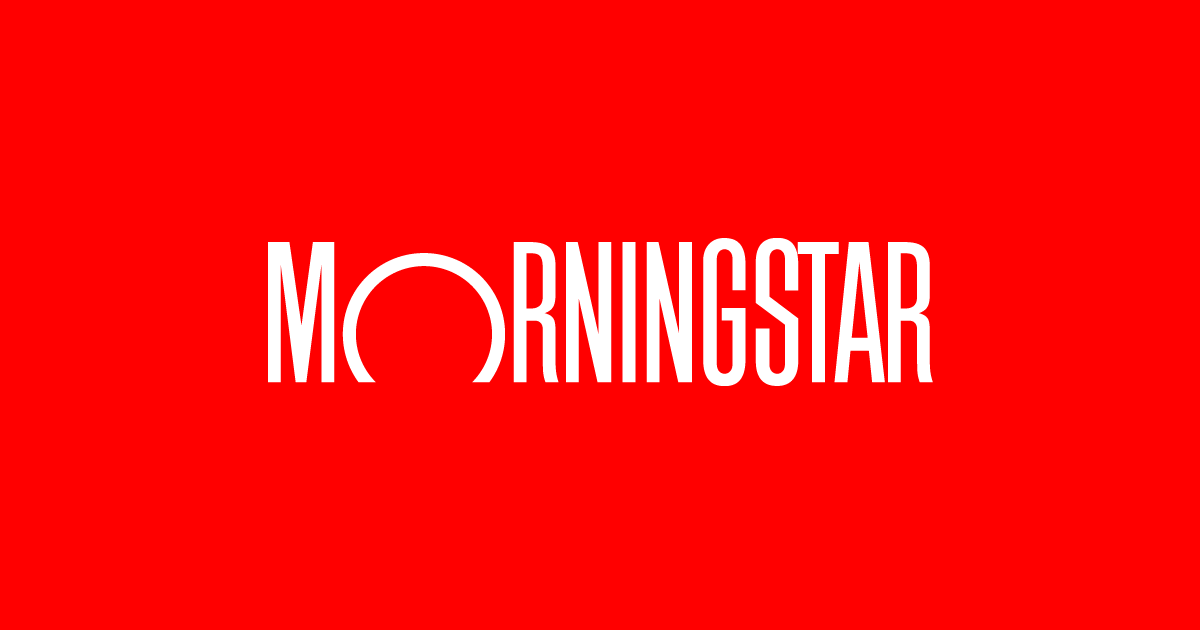
By Weston Blasi
A bill exempting name, image and likeness earnings from state income tax has been signed into law in Arkansas
The fight in recruiting college athletes will now include taxes.
Colleges across the nation are locked in a constant battle over high school and college transfers to improve their sports teams, particularly in big revenue-generating sports like football and men’s basketball. Recruiting athletes is a tough endeavor, but colleges in Arkansas were just given a big edge.
Arkansas became the first state in the U.S. to enact a law that exempts name, image and likeness payments (NIL) from its state income tax. Arkansas Gov. Sarah Huckabee Sanders, a Republican, signed the bill into law in April, and it will be retroactive to Jan. 1, 2025 as part of the Arkansas Student-Athlete Publicity Rights Act.
Under the new law, all NIL and university revenue-sharing funds received by student athletes will be exempt from state income tax. The legislation also mandates that financial details concerning payments to athletes will be kept confidential and are not subject to the Freedom of Information Act.
“Income received by a student athlete from an institution of higher education as compensation for the use of his or her name, image, or likeness or as a percentage of institutional athletic revenue permitted by the institution of higher education’s governing athletic association or conference under this subchapter is exempt from state income tax,” the law states.
The top state income-tax rate in Arkansas for individuals is 3.9%.
Of course, this is a state-only law, and any income an athlete earns from NIL deals are still subject federal income tax.
See: Here’s how much money Shedeur Sanders lost out on by falling to the fifth round of the NFL draft
What will the implementation of this new law actually do? Experts said it’s mainly about recruiting players.
“A state would do this to really prioritize college athletics,” Daniel S. Greene, an attorney who specializes in business and NIL, told MarketWatch. “It’s all about recruiting and giving your schools the best chance to bring in the best kids any way you can.”
No state income tax could could help coaches and NIL collectives in their recruiting process, particularly to athletes who care most about maximizing earnings.
“I’ve followed state legislatures closely, and the states down south really care about college athletics, and they really want their football teams to be super competitive,” Green said. “They can say to their kids, ‘Hey come here, there’s also no taxes.'”
Tim Frith, a sports attorney at WLJ Sports Law, said this new regulation could be a “major recruiting tool for schools in Arkansas.”
But one lawmaker in Arkansas said that the new law won’t give Arkansas an unfair advantage over rivals – instead it will even the playing field. That’s because some nearby states that Arkansas competes with for top college athletes don’t have any state income tax at all.
The tax exemption will assist Arkansas schools in attracting athletes that bring “a significant amount of revenue to the state,” Arkansas Senate President Bart Hester said. And it also will help Arkansas schools “keep up with Tennessee and Texas and other states that do not have a state income tax,” he added.
In other states, such as Alabama, Georgia, Illinois and Louisiana, similar bills have been introduced but have not yet been signed into law.
See: Some Americans are stockpiling $220 sneakers before Trump’s tariffs raise prices even higher
The move by Arkansas comes as the the NIL system surrounding college athletics is being stressed.
Top college football players are now earning millions annually through NIL deals. For instance, University of Miami quarterback Carson Beck’s NIL value is $4.3 million, and Ohio State wide receiver Jeremiah Smith’s is $4 million, according to On3.
The NCAA recently approved rule changes in April that could significantly alter college sports. These proposals involve revising NIL guidelines and establishing a revenue-sharing model where schools could distribute $20.5 million across all athletes in all sports.
In an unprecedented event this month, a college quarterback effectively held out for a better NIL contract, a tactic usually seen in professional sports. Former University of Tennessee quarterback Nico Iamaleava missed practice and subsequently transferred to UCLA due to discontent with his NIL earnings and his situation with the team.
“I’m not certain that this is going to become very common, as collectives have become wiser and craftier in the creation of their contracts, which tend to seek to avoid situations like this,” Darren Heitner, a lawyer who brokers NIL deals for student athletes, told MarketWatch about the holdout. “I have seen many such arrangements where collectives seek to claw back monies paid out or even receive liquidated damages, but I wonder whether athletes will be deterred unless/until a major action is initiated to enforce such language.”
Read on: EA’s upcoming college-football game ‘taking advantage’ of players with $600 payment, expert says
-Weston Blasi
This content was created by MarketWatch, which is operated by Dow Jones & Co. MarketWatch is published independently from Dow Jones Newswires and The Wall Street Journal.
(END) Dow Jones Newswires
04-29-25 1806ET
Copyright (c) 2025 Dow Jones & Company, Inc.
NIL
Amateur Hour Is Over: College Athletes Can Get Paid by Schools
Good morning and welcome to another edition of Free Agent! Hold onto your buckets and your babies—this might be a wild ride. College sports is officially entering a new era. Amateurism is over and professionalism is (mostly) here. Athletes can officially get paid directly by their schools without a workaround involving boosters or a name, […]
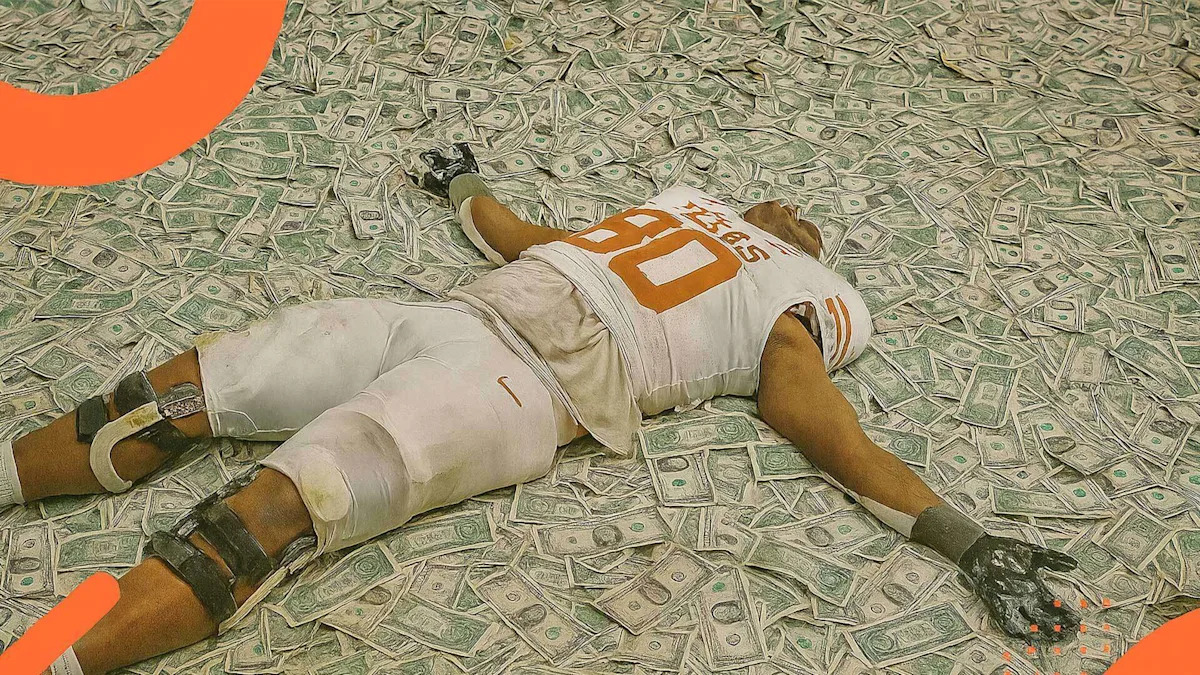
Good morning and welcome to another edition of Free Agent! Hold onto your buckets and your babies—this might be a wild ride.
College sports is officially entering a new era. Amateurism is over and professionalism is (mostly) here. Athletes can officially get paid directly by their schools without a workaround involving boosters or a name, image, and likeness (NIL) collective. Instead of our usual format, the newsletter this week is focused on this monumental change.
Advertisement
But first, I want to thank everyone who voted in our survey last week about who you’re rooting for in the NBA and NHL finals. Free Agent readership was surprisingly evenly split in both series. Shoutout to the fan who said “Seattle kid. Anyone but Thunder.” You’ll have your team soon, I’m sure. As for hockey, I was amused by this response: “I want Ron Desantis to have more Stanley Cups than Canada.” Three down, 40 to go.
Late on Friday, a federal judge gave final approval to a settlement in House v. NCAA, bringing to an end three antitrust cases against the NCAA and power conferences. It’s a huge change: Starting July 1, college sports will spend a decade (at least) in a revenue-sharing system, with schools directly paying athletes for their NIL. Next school year athletic departments will be allowed to pay a combined $20.5 million to athletes across all their sports, with the number rising in the future. (The NCAA and power conferences will also pay almost $2.8 billion in damages to athletes who, dating back to 2016, weren’t allowed to sign NIL deals.)
Advertisement
I talked to Mit Winter, an NIL attorney at Kennyhertz Perry, about how all of this is going to work. Hopefully this answers all the questions you might have about the new system, although a lot of it is still in limbo. I’ve been following this closely and I still learned a lot from our conversation. If you have lingering questions, email me at freeagent@reason.com and I’ll try to figure out an answer for you.
Q: With final approval of the House settlement, colleges will be able to directly pay athletes for the first time. Give us a brief breakdown of how these payments are going to work.
A: Looking forward for college athletics, schools will be able to directly pay their athletes NIL compensation. So they are actively entering into contracts now with their athletes that spell out, “All right, here’s how much we are going to pay you for the use of your NIL in various ways.” That’s obviously a change from how things have worked in the past in college athletics where the cardinal rule was, “Schools, you cannot pay your athletes.”
Q: But the athletes still aren’t technically employees, so that’s causing some other complications, right?
A: Correct, they’re not currently considered employees. These agreements they’re entering into with schools are just NIL licensing agreements. Sometimes they include a services component as well, where the athlete might make appearances or sign autographs or something like that.
Advertisement
Q: But there are some new restrictions on outside NIL deals with boosters?
A: In addition to now allowing schools to directly pay their athletes, the House settlement also contains some new rules around deals athletes can do with NIL collectives and boosters. Athletes will have to disclose to a new clearinghouse entity called the College Sports Commission all third-party NIL deals they do. The College Sports Commission is contracted with Deloitte to do this review process of all of the deals.
If an athlete submits a third-party NIL deal and it’s determined that the deal is with an associated [to the school] entity or individual, then there’s a couple of extra layers of review of that deal. First, the deal has to be for a valid business purpose. Once that determination is made, then the next overview Deloitte will be performing is, “Okay, is the amount being paid to the athlete within what’s being called an appropriate range of compensation for the services being provided by this specific athlete?”
But if Deloitte determines either the deal’s not for a valid business purpose, like they think it’s just a “pay-for-play” booster deal in disguise, or if the amount of compensation being provided to the athlete is not within the appropriate range of compensation, then Deloitte will notify the College Sports Commission that, “Hey, there’s a problem with this deal.” Then at that point it’s up to the College Sports Commission to say, “All right, athlete, you can go ahead and do this deal if you want to, but you might be ineligible to participate in college athletics.”
Advertisement
Q: Some believe this might lead to the old ways of under-the-table payments and recruiting violations.
A: It’s a definite possibility because the amount of NIL compensation that schools could pay their athletes is going to be capped at, for the first year, $20.5 million for the entire year for all of the school’s athletes, so not just the football team. And there are some football teams making well over $20 million in NIL compensation from booster and collective deals for this upcoming season.
So you can see if you have a football team right now taking $30 million, and then in the future, the cap for all of the school’s athletes is going to be $20.5 million, there’s obviously a $10 million gap right there, that if you can’t do it through legitimate deals, third-party NIL deals and Deloitte is shooting down all these third-party deals, that’s when you might go back to under-the-table payments from boosters to win recruiting battles or keep a guy at a school.
Q: Talk to us about this from the conference level.
A: Every Division I school, no matter what your athletics revenue is, you’re going to be able to pay [athletes] up to $20.5 million. That money can come from any source that the university can use to find that money. Obviously, it’s going to be easier to come up with that money for some Division I schools than others. Big Ten and SEC schools might have the easiest time just because the amount of TV revenue those conferences receive and then distribute out to their members is higher than any other conference, including the Big 12 and the ACC. But schools, they’re going to be heavily reliant on donors for sure, but then there are other potential strategies they’re going to use.
Advertisement
There’s a lot of talk about private equity or private capital that some schools might access. There are businesses out there that are very heavily focused now on helping schools generate revenue through different types of creative partnerships, so it’s going to be all over the map in terms of how schools are trying to come up with this new $20.5 million. And then you’ll have some schools that will cut staff. Some have already cut staff, including Oklahoma, who’s an SEC school, obviously, so they’ve cut staff. You’ve had some schools announce they are dropping a few sports, like tennis programs have been dropped in some places, swim and dive teams. So it’s going to vary from school to school on how they come up with this money.
Q: Now, back to the athletes themselves, there are no changes to the transfer system, right? Athletes are still kind of on these one-year contracts, with a fair amount of ability to move at will?
A: Yes, correct. The transfer rules are going to stay the same, they’re not affected by the House settlement at all. Although schools and conferences would love to be able to put some more transfer restrictions back in place and they’re hopeful that Congress will pass a law that gives them an antitrust exemption that would then allow them to put some of those transfer rules back in place because courts have held right now that those transfer rules violate antitrust law.
Some of the contracts that schools are entering into with their athletes, they have some provisions that are trying to prevent as much movement as there has been, like buyouts and clawbacks and things like that. [It] remains to be seen whether those will be effective or not in limiting movement, so we’ll just have to see how that plays out.
Advertisement
Q: There are already some lawsuits challenging the current NCAA eligibility rules, but what lawsuits are coming next, or are already in play after the House settlement?
A: A big one’s going to be Title IX. There will be a lot of Title IX lawsuits, because as we talked about earlier, [schools] will be able to pay out $20.5 million to their athletes, and most schools are planning on paying out, at least if you are a [Power Four] school with a football team, are paying out 75 percent to 80 percent of that $20 million to the football team, around 15 percent to the men’s basketball team, maybe 5 percent to the women’s basketball team, and then 5 percent to other sports, which might be softball, baseball, whatever other sport a school chooses—85 percent to 90 percent of that $20 million is going to go to male athletes. Some people think that’s not in compliance with Title IX, other people think it is. It’s a gray area right now, there’s no black-and-white law. That will be litigated probably in lots of places and there will be probably lots of lawsuits filed against schools on that issue.
I also think we will see some litigation related to the salary cap, because it was not agreed to by a player’s association where, like in pro sports, the salary caps and things like that are collectively bargained with a players association, which makes them exempt from antitrust law. But this salary cap in college athletics is not going to be exempt from antitrust law. So future college athletes coming into college athletics will be able to bring damages, lawsuits, challenging that salary cap, so I think we’ll definitely see some of that.
I think we’ll probably see some more employment litigation for determination that college athletes are employees. There’s already one big case pending on that issue called the Johnson v. NCAA case in federal court. It said college athletes can be employees, it didn’t say they are. It said, “They can, and here’s the test to determine whether they are.” That was an appellate court, it’s now down at the trial court level to actually make that determination. But I definitely think we’ll see some more of that litigation, especially now that you have the schools contracting with athletes. It potentially makes that employment argument stronger than it was before.
Advertisement
This interview has been condensed and edited for style and clarity.
Lots of great candidates this week that you’ve probably already seen, like the Tyrese Haliburton game-winner, a brawl in the Stanley Cup Finals, and perhaps the best home run robbery you’ll ever see (the A’s still lost). But here’s a wild golf shot you probably missed (and that wasn’t even the craziest golf shot this weekend).
That’s all for this week. Enjoy watching the real game of the weekend, the UFL championship game featuring the D.C. Defenders against the Michigan Panthers (Saturday, 8 P.M., on FOX). Many are calling it the Jason Bowl due to my dual loyalties.
The post Amateur Hour Is Over: College Athletes Can Get Paid by Schools appeared first on Reason.com.
NIL
Tennessee law supersedes NCAA eligibility rule
Attorneys for former Tennessee basketball player Zakai Zeigler are trying to utilize a new state law curtailing the NCAA’s authority to get him an additional year of eligibility. It’s the latest twist in Zeigler’s federal lawsuit against the NCAA, which challenges the so-called “Four Seasons” rule. The NCAA allows athletes to play four seasons during […]

Attorneys for former Tennessee basketball player Zakai Zeigler are trying to utilize a new state law curtailing the NCAA’s authority to get him an additional year of eligibility.
It’s the latest twist in Zeigler’s federal lawsuit against the NCAA, which challenges the so-called “Four Seasons” rule. The NCAA allows athletes to play four seasons during a five-year period, which can include a redshirt year.
Zeigler ran out of NCAA eligibility by playing the past four seasons for UT basketball and not taking a redshirt. He wants to play a fifth season and earn millions of dollars in NIL pay. His attorneys say the NCAA does not have the authority in the state of Tennessee to stop him.
The new Tennessee law, Senate Bill 536, allows Tennessee universities and athletes to opt out of NCAA rules if they appear to violate antitrust law. The initial purpose was to shift liability toward the NCAA and conferences and away from the schools in anticipated antitrust lawsuits by athletes unhappy with new player-pay rules in college sports.
But broad language in the law – which has not been litigated in any court – strips the NCAA of its power if the association prohibits a Tennessee athlete from earning money. Zeigler’s attorneys are seizing on that portion to push for a preliminary injunction that would grant him a fifth year of eligibility.
“(The new Tennessee law is) unambiguously clear: Any NCAA action that impacts an athlete’s ability to earn NIL compensation or his or her eligibility, like the Four-Seasons Rule, is illegal in Tennessee,” Zeigler’s attorneys argued in a brief filed to the Eastern District of Tennessee federal court on June 7.
NCAA says Tennessee law is irrelevant in Zakai Zeigler case
The NCAA countered, accusing Zeigler of exploiting a law that doesn’t apply to his case.
“(Zeigler’s brief) continues his effort to dismantle the NCAA membership’s longstanding eligibility rules by any means necessary — this time through a tortured reading of an irrelevant law,” NCAA attorneys wrote in a brief to the court on June 8.
“Common sense dictates that the new Tennessee statute has nothing to do with this case.”
The law appeared to be in response to Tennessee v. NCAA, a separate federal lawsuit that challenged the NCAA’s rules that prohibited schools from facilitating NIL negotiations with players and recruits.
Tennessee and the NCAA reached a settlement in that case in January, the same month that Senate Bill 536 was introduced in the legislature. The new law was signed by Gov. Bill Lee on May 1, and it sparked a fight between UT and power conferences about whether the school had to follow new player-pay rules set forth in the House settlement.
However, a provision in the new law said the NCAA shall not “interfere with, prohibit, restrict, or otherwise adversely affect an intercollegiate athlete’s ability to earn compensation … and shall not otherwise impact an intercollegiate athlete’s eligibility or full participation in intercollegiate athletic events.”
Zeigler has used that language in his fight against the NCAA. Federal Judge Katherine Crytzer could invalidate the state law altogether if she wants.
Should Tennessee or NCAA decide if Zeigler can keep playing?
Zeigler has a guaranteed spot on Tennessee’s 2025-26 basketball roster if Crytzer allows it. The latest hearing was held in Knoxville on June 6, and both sides are jockeying for a stronger position.
Zeigler’s attorney, Alex Little, told the judge that Zeigler intends to play for the Vols and was told he had a spot on the team. But Little also said the NCAA wouldn’t be able to restrict Zeigler’s entrance into the transfer portal, presumably meaning if his injunction request was approved, Zeigler would have the option to play at another school, not just UT.
The NCAA argues that its eligibility rules are clear, and Zeigler cannot exceed them. But Zeigler’s attorneys say that the law allows UT to determine who plays on its teams, not the NCAA.
“(The NCAA) argued that the phrase ‘can . . . participate’ means that Mr. Zeigler must be eligible to participate under its own eligibility rules,” Zeigler’s attorneys argued in a brief. “But this argument assumes its own premise: that the NCAA — rather than the institution — determines who gets to ‘participate in an athletic program (at an institution).’”
NCAA says UT can’t support Zeigler and agree to NCAA rules
The NCAA sees a contradiction in UT’s apparent support of Zeigler and its acceptance of NCAA eligibility rules. After all, member schools like UT make up the NCAA and adopt its rules.
The House settlement, which resolved three federal antitrust lawsuits against the NCAA and four power conferences (ACC, Big Ten, Big 12, SEC), could strengthen the NCAA’s position in the Zeigler case. The settlement was approved on June 6, just hours after the conclusion of Zeigler’s hearing, and reinforced eligibility rules.
The House settlement permitted the NCAA and conferences to cap the number of years an athlete is eligible to receive payments at four years plus a redshirt year, providing that all four of those seasons must be played within a consecutive five-year period.
The SEC, which includes UT as a member, agreed to that settlement.
“The State’s flagship institution (which happens to be the school Plaintiff attended) is a member of an athletic conference that has agreed to a settlement that expressly affirms the NCAA’s Four-Seasons Rule,” NCAA attorneys argued in a brief. “That same institution, the University of Tennessee, obtained valuable legal releases pursuant to that settlement and unsurprisingly has repeatedly endorsed it.
“It is accordingly hard to imagine the Tennessee legislature passing a law so obviously at odds with the University of Tennessee’s legal position and interests.”
Adam Sparks is the Tennessee football beat reporter. Email adam.sparks@knoxnews.com. X, formerly known as Twitter@AdamSparks. Support strong local journalism by subscribing at knoxnews.com/subscribe.
Get the latest news and insight on SEC football by subscribing to the SEC Unfiltered newsletter, delivered straight to your inbox.
NIL
Revenue sharing, NIL, roster limits and more
The “CSC,” as you’ll also see it referenced, is basically taking over as the investigative and enforcement arm of college sports, replacing the role held previously by the NCAA. It’s a joint creation of the Power 4 conferences to ensure the settlement is operated and its NIL and revenue-sharing rules are enforced properly. The CSC […]
The “CSC,” as you’ll also see it referenced, is basically taking over as the investigative and enforcement arm of college sports, replacing the role held previously by the NCAA. It’s a joint creation of the Power 4 conferences to ensure the settlement is operated and its NIL and revenue-sharing rules are enforced properly. The CSC will be headed up by CEO Bryan Seeley, who has spent the past decade working for Major League Baseball, currently as its executive vice president of legal and operations having been tabbed in 2014 to head MLB’s investigation department after a career as a federal prosecutor and an assistant U.S. Attorney for the Department of Justice’s public corruption section.
CBS Sports national college football reporter Brandon Marcello wrote that the CSC will be “a smaller, more agile version of the NCAA’s enforcement arm.” Seeley, who led the investigations into MLB’s sign-stealing scandals with the Houston Astros and Boston Red Sox, “will have the final say on settlement-related items and enforcement of fair market value NIL deals of greater than $600,” per Marcello’s sources, who added that Seeley “is expected to have considerable latitude to penalize as they see fit.” Players could be ruled ineligible for accepted deals flagged by the “NIL Go” clearinghouse, which will give ranges on what deals should be worth based on market data.
The expectation is the CSC will conduct and conclude investigations in a more timely manner than the NCAA’s never-ending process, and ideally it would operate with greater transparency.
Again, though, the CSC attempting to cap what athletes can earn almost certainly will lead to legal challenges.
NIL
What will the new NIL rules actually mean for Alabama?
We’re entering a new era of college football where colleges will now be able to pay players directly. And we’re looking at new scrutiny for so-called pay-to-play NIL deals. Michael Casagrande joins us to break down what the bombshell NCAA House settlement could mean for Alabama’s future. Later, he competes against producer Matt Scalici to […]
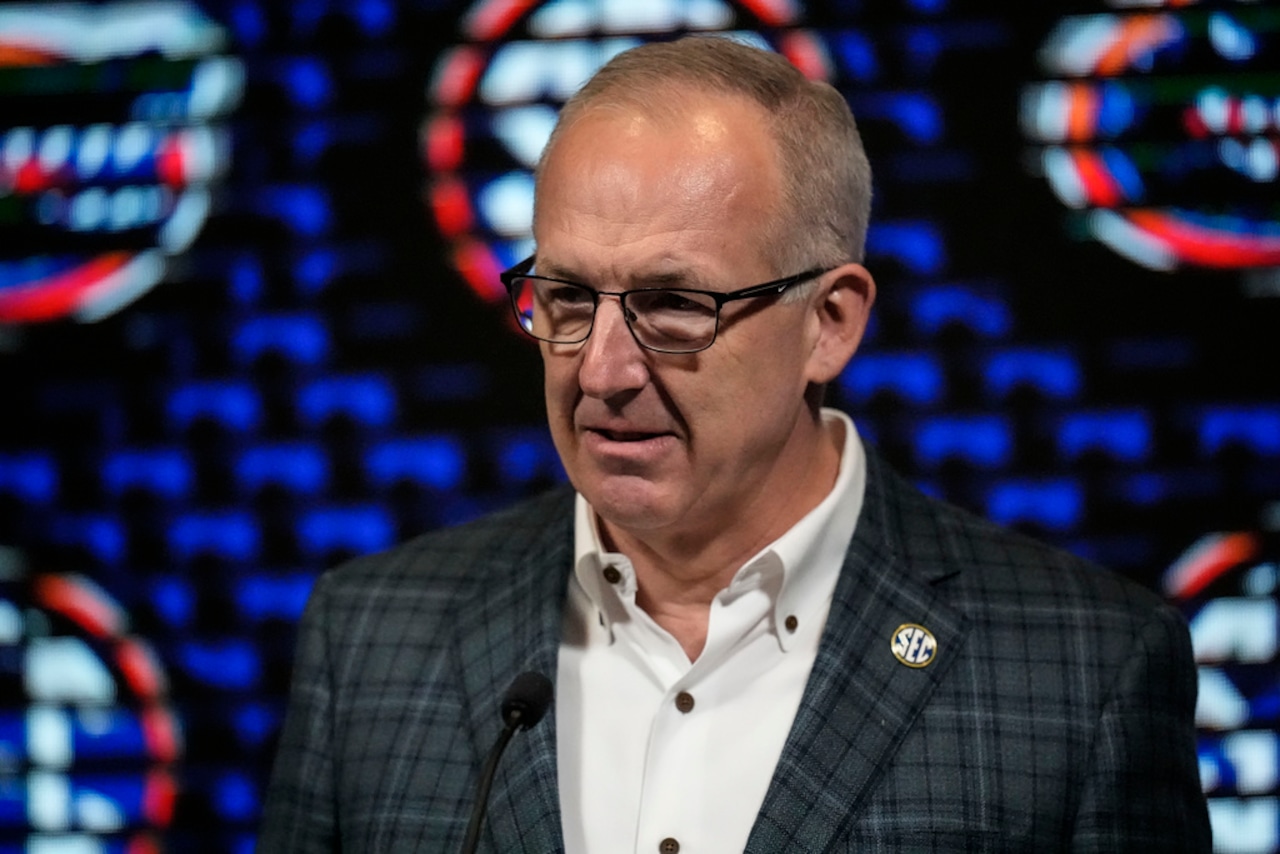
We’re entering a new era of college football where colleges will now be able to pay players directly. And we’re looking at new scrutiny for so-called pay-to-play NIL deals. Michael Casagrande joins us to break down what the bombshell NCAA House settlement could mean for Alabama’s future.
Later, he competes against producer Matt Scalici to draft a coaching staff made up entirely of former Nick Saban assistants.
Beat Everyone is available on YouTube, Apple Podcasts, Spotify or wherever you get your podcasts. Follow the show on your favorite platform to automatically receive new episodes every Tuesday and Thursday.
NIL
Becroft tabbed as Central Region’s ITA Senior Player of the Year
STILLWATER – Oklahoma State’s Isaac Becroft was named as the 2025 Central Region Intercollegiate Tennis Association Senior Player of the Year it was announced by the ITA Tuesday morning. The award honors the senior student-athlete who had the best year among all student-athletes in his/her class in his/her region. Becroft takes home a regional ITA […]
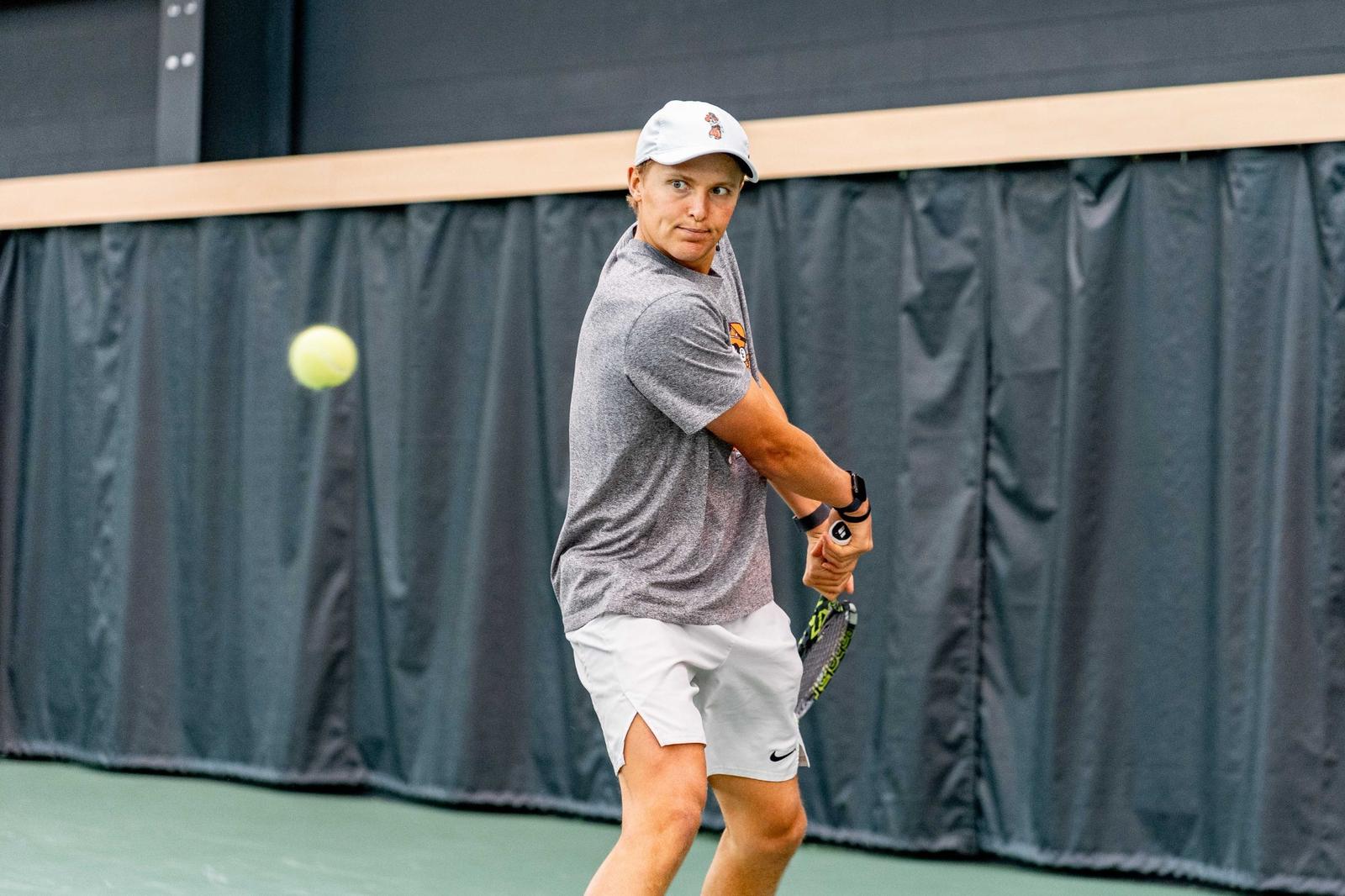
The award honors the senior student-athlete who had the best year among all student-athletes in his/her class in his/her region. Becroft takes home a regional ITA Award for the second-straight year, last year picking up the ITA Most Improved Player for the Central Region.
On the court, Becroft leaves OSU with All-America status in doubles, All-Big 12 first-team distinctions in singles (2025) and doubles (2024) and All-Big 12 second-team honors in singles in 2024. Additionally, he was named the 2024 ITA Central Region Most Improved Player and was named the Big 12 Newcomer of the Year in 2023.
In his final season with the Cowboys, Becroft tallied a trio of ranked wins, taking down UCSB’s Gianluka Brunkow, UCF’s Yassine Dlimi and Baylor’s Devin Badenhorst. Becroft totaled an 11-8 record on the season, playing all his matches on court one. The captain went 5-3 in Big 12 play.
Becroft’s accomplishments haven’t been just on the court, but also in the classroom. The recent graduate earned CSA Academic All-American status for the third straight year last week, an accomplishment only achieved by six other OSU student-athletes.
For season-long coverage of Oklahoma State men’s tennis, visit okstate.com and follow @CowboyTennis on Instagram and X.
NIL
House v. NCAA Settlement
IMG Academy Jun 10, 2025 The recent House v. NCAA settlement marks a transformative shift in college athletics. At IMG Academy, we’ve been preparing for this moment for years. As a leader in student-athlete development, we’re not just responding to these changes – we’re ahead of them. Through groundbreaking partnerships with Merrill and Advance NIL, […]

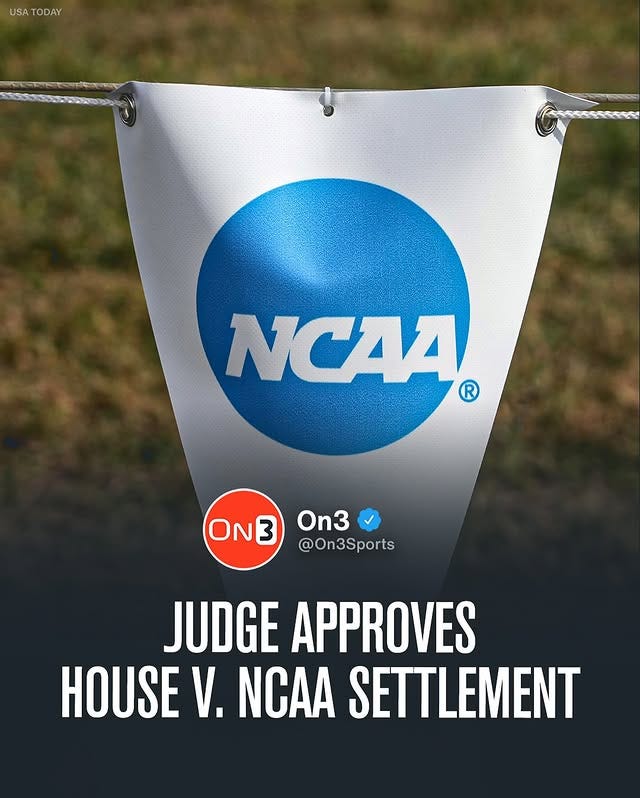
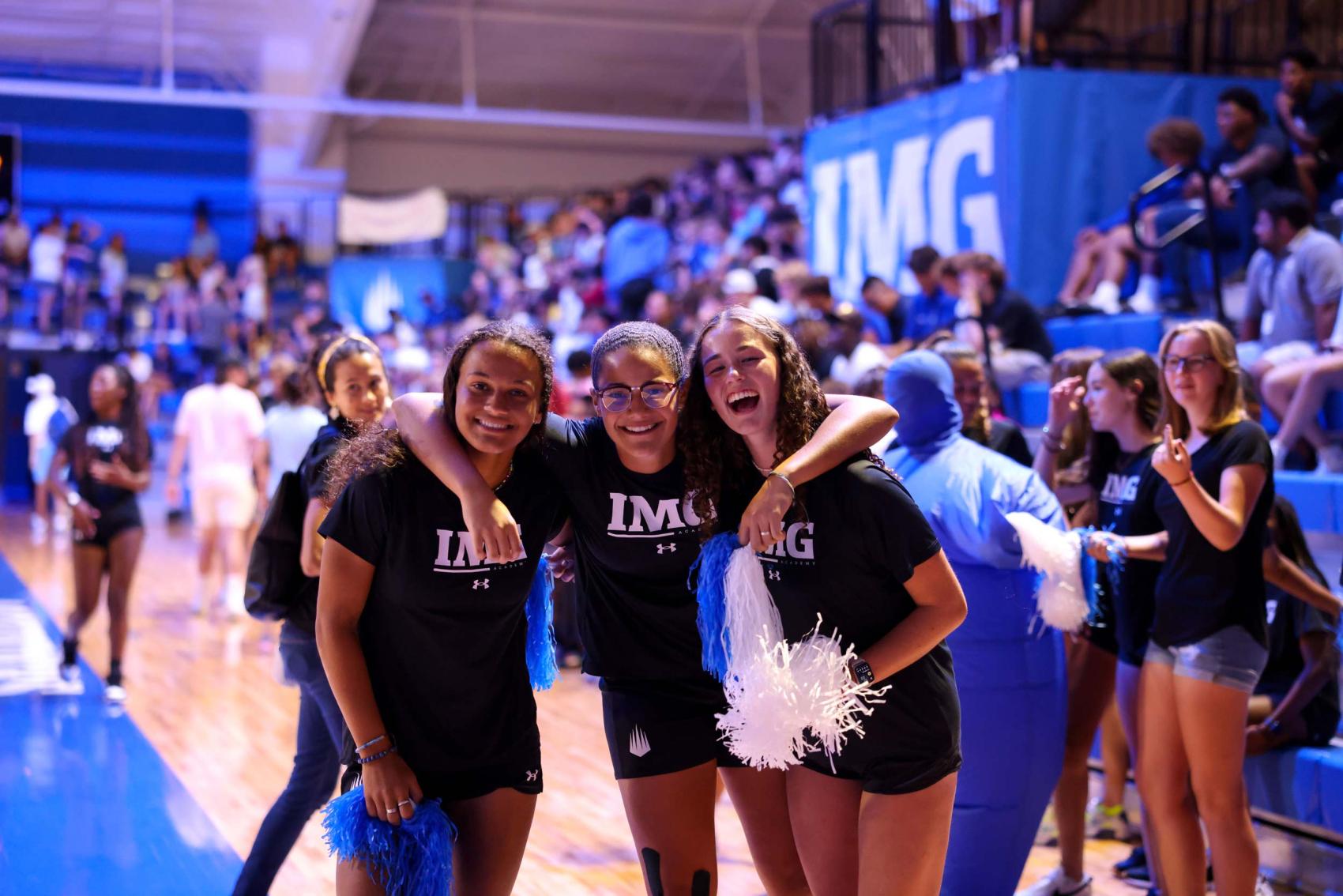
The recent House v. NCAA settlement marks a transformative shift in college athletics. At IMG Academy, we’ve been preparing for this moment for years. As a leader in student-athlete development, we’re not just responding to these changes – we’re ahead of them.
Through groundbreaking partnerships with Merrill and Advance NIL, we’ve been educating our student-athletes on NIL, financial literacy, and personal brand building. This isn’t new territory for us – it’s part of the comprehensive and holistic development we deliver every day.
Navigating the future of college sports requires more than just talent on the field. It takes education, preparation, and the right guidance. IMG Academy is proud to stand beside families as these new opportunities unfold. Whether your student-athlete is preparing for college or just beginning their journey, we’re here to help you make sense of what’s next.
Here’s what you need to know about the ruling:
What is House v. NCAA about?
House v. NCAA is an antitrust lawsuit that argued the NCAA and its member schools unlawfully restricted student-athletes from profiting off their name, image, and likeness (NIL). The settlement includes:
- A $2.8 billion payout to former Division I student-athletes
- A framework for future revenue sharing between schools and student-athletes
Will my student-athlete get paid to play in college now?
Maybe, but it depends.
- Starting in 2025, schools can opt to share a “cap” of up to $20.5 million with their student-athletes, beginning July 1, 2025. That cap may grow by ~4% annually.
- Each school decides how to allocate that money
- Football and men’s basketball will likely receive the largest shares
- Other sports — like softball, track, or swimming — may receive much less. In some cases, teams may only receive a few hundred thousand dollars to divide across the entire roster
Will more changes come?
Yes, this is just the beginning. Many details still need to be finalized, and additional legal challenges are expected:
- A “cap” limits how much schools can pay. If that cap is seen as unfair, it may be challenged in future lawsuits
- Families should expect recruiting, roster management, and scholarship models to evolve in the coming years
Which student-athletes are covered by the settlement?
This applies to all Division I student-athletes who:
- Competed on or after June 15, 2020
- Or will compete anytime through June 5, 2035
That includes today’s middle schoolers, high schoolers, and postgrads aiming to play Division I sports.
Do all schools have to follow the new model?
- All Power 5 schools (plus Notre Dame) must follow the new rules
- Other Division I schools can choose to opt in
- Division II and III schools are not yet affected — though future adjustments may eventually ripple into those divisions
What if my student-athlete lost a roster spot because of this?
If a school cut a student-athlete in preparation for this settlement:
- They’re required to offer that roster spot back
- The student-athlete won’t count against team roster limits
- However, coaches still retain the discretion to determine whether a student-athlete is a fit for their program
What else is changing?
- The NCAA is eliminating 150 outdated rules to modernize student-athlete benefits
- A new governing body, the College Sports Commission, will oversee enforcement
- A tech platform, NILgo, will help schools track athlete compensation and ensure compliance. Any third-party NIL agreement over $600 will be reviewed, with external arbitration if disputes arise.
IMG Academy is committed to helping student-athletes and families understand this once-in-a-generation shift in college athletics. While there’s real opportunity ahead, there are still many unanswered questions.
The best things you can do right now is stay informed, stay flexible, and keep advocating for your student-athlete
-

 Professional Sports3 weeks ago
Professional Sports3 weeks agoJon Jones answers UFC retirement speculation as fans accuse champion of 'holding the belt …
-

 NIL2 weeks ago
NIL2 weeks ago2025 NCAA Softball Tournament Bracket: Women’s College World Series bracket, schedule set
-

 Motorsports3 weeks ago
Motorsports3 weeks agoWhy IHOP Rode With Dale Earnhardt Jr. In Amazon NASCAR Debut
-

 Health5 days ago
Health5 days agoOregon track star wages legal battle against trans athlete policy after medal ceremony protest
-

 College Sports1 week ago
College Sports1 week agoIU basketball recruiting
-

 Professional Sports5 days ago
Professional Sports5 days ago'I asked Anderson privately'… UFC legend retells secret sparring session between Jon Jones …
-

 Youtube3 weeks ago
Youtube3 weeks agoAnt greets A-Rod & Barry Bonds before Game 3
-

 Rec Sports2 weeks ago
Rec Sports2 weeks agoJ.W. Craft: Investing in Community Through Sports
-

 Professional Sports5 days ago
Professional Sports5 days agoUFC 316 star storms out of Media Day when asked about bitter feud with Rampage Jackson
-

 Rec Sports2 weeks ago
Rec Sports2 weeks agoScott Barker named to lead CCS basketball • SSentinel.com




























 Stephen A. responds to LeBron’s NBA coverage criticism | First Take
Stephen A. responds to LeBron’s NBA coverage criticism | First Take









